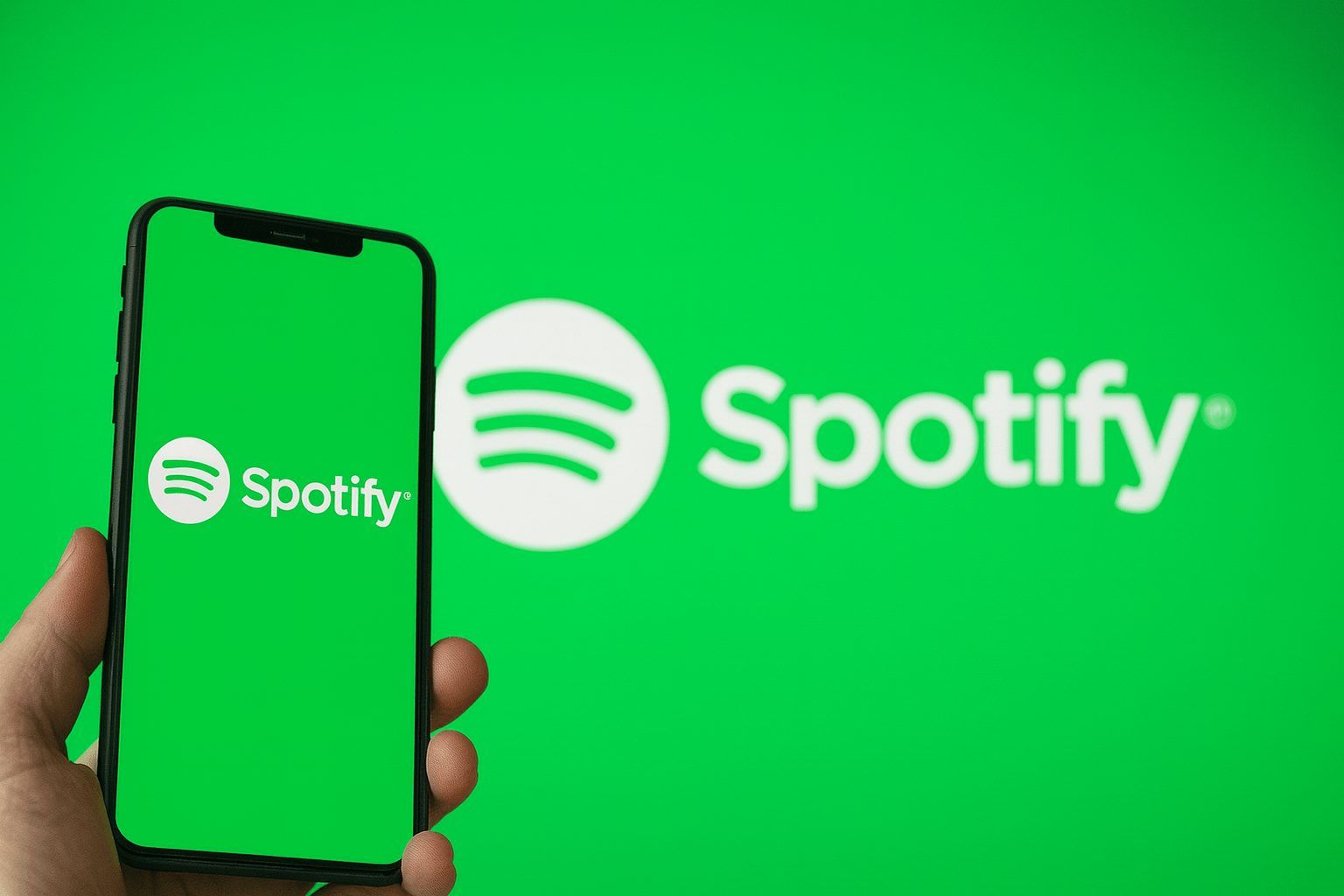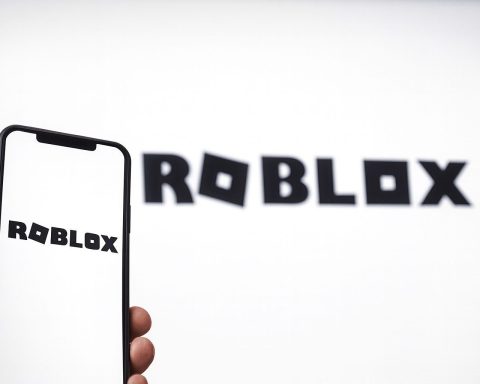Spotify stock (NYSE: SPOT) heads into Sunday, 23 November 2025, after a choppy week that saw shares slip back below the psychologically important $600 level – but the broader story is still one of strong multi‑year gains, rapidly improving profitability, and a valuation that remains firmly in “priced for perfection” territory. [1]
As the U.S. market is closed today, the latest actionable numbers for SPOT are Friday’s close:
- Last close (Friday, 21 Nov 2025): $583.61 per share [2]
- Market cap: around $120 billion [3]
- Total return: up about 30.5% year‑to‑date and ~24% over the last 12 months [4]
- 5‑year total return: roughly +117% (a $1,000 investment five years ago would be worth about $2,170 today) [5]
At the same time, Spotify’s trailing P/E sits just under 92, far above the broader market’s multiple. [6]
Below is a deep dive into all the major Spotify stock developments relevant today (23 November 2025) and what they might mean for investors watching SPOT.
Key Takeaways for SPOT on 23 November 2025
- Price & performance: SPOT closed Friday at $583.61, down about 1% on the day and roughly 8% for the week, but still delivering a ~30% gain in 2025 and triple‑digit returns over five years. [7]
- Big money buying: New 13F disclosures show American Century Companies and DNB Asset Management have both increased exposure to Spotify, reinforcing already heavy institutional ownership. [8]
- Included in a “best media stocks” list: Insider Monkey today named Spotify one of the “12 Best Communication and Media Stocks to Buy Now.” [9]
- Strategy news still driving the story: Spotify’s recent WhoSampled acquisition and new SongDNA feature, a “Platinum” subscription tier test, expanded audiobooks, and today’s “Import your music” playlist transfer tool are front and center in the growth narrative. [10]
- Valuation vs. growth tension: Analysts broadly rate SPOT a “Moderate Buy” with an average target around $759 and some price targets near $800–830, but multiple commentators are warning that the stock is expensive and leaves limited room for execution missteps. [11]
Spotify Stock Price Today: Recap After a Volatile Week
Although it’s Sunday, today’s view of SPOT is anchored in Friday’s close:
- Friday close: $583.61
- 1‑year range: roughly $443–$785 [12]
On Thursday, 20 November, shares fell below $600 for the first time since April, finishing that session at about $589.23. Digital Music News linked the drop to broader market turbulence, Spotify’s lofty valuation, and questions about the durability of its profitability and ad‑supported revenues. [13]
Despite the pullback, SPOT remains:
- Up ~30.5% in 2025,
- Up ~24% over 12 months, and
- Up ~117% over five years. [14]
That performance comes with serious volatility: the stock plunged 66% in 2022, then surged 129% in 2023 and nearly 138% in 2024, making 2024 Spotify’s best year of the past decade. [15]
All the Major Spotify (SPOT) Headlines Relevant on 23 November 2025
1. Big institutional investors are adding to Spotify
Two fresh MarketBeat alerts dated 23 November 2025 show notable institutional moves into SPOT:
- American Century Companies Inc.
- Boosted its Spotify stake by 26.6% in Q2.
- Now holds 420,887 shares, or about 0.21% of the company, valued at roughly $323 million in the latest filing. [16]
- DNB Asset Management AS
- Initiated a new position in Q2, buying 38,890 shares valued at around $29.8 million. [17]
Both articles note that institutional investors now own about 84% of Spotify’s shares, with large positions held by firms like Goldman Sachs, Northern Trust, Geode, Forsta AP Fonden, and Invesco. [18]
Why it matters for the stock:
Heavy institutional ownership can cut both ways. It often signals confidence in the long‑term story, but it also means the stock can move sharply when big funds rebalance.
2. Spotify named among “12 Best Communication and Media Stocks to Buy Now”
A new Insider Monkey article published today (23 November 2025) lists Spotify Technology S.A. (NYSE: SPOT) alongside names like AT&T, Disney, Netflix and Alphabet in its “12 Best Communication and Media Stocks to Buy Now” rundown. [19]
While the full Spotify write‑up is behind navigation, the inclusion itself underscores:
- Ongoing hedge fund interest in Spotify,
- Its positioning as a platform business that blends communications, media, and advertising, not just music.
For sentiment, list‑style pieces like this can keep SPOT in front of retail and institutional investors scanning for ideas.
3. Playlist transfer gets easier: “Import your music” + TuneMyMusic
Spotify is now pushing hard on reducing friction for users switching from rival services:
- Today‑dated reports from Hindustan Times and The Indian Express describe a new in‑app “Import your music” option that lets users move playlists from other platforms directly inside Spotify, without relying on separate browser tools. [20]
- Digital Music News notes that Spotify also announced deeper integration with TuneMyMusic, a long‑time third‑party playlist‑migration service, folding those capabilities more tightly into the Spotify experience. [21]
Why investors care:
- Lower switching costs can accelerate subscriber growth, especially in price‑sensitive or emerging markets where users may be migrating from local or ad‑supported services.
- Integrated migration tools also help Spotify capture users who might otherwise sign up temporarily or churn back to their original service.
4. WhoSampled acquisition & SongDNA feature: enhancing the music “graph”
Spotify’s recently announced acquisition of WhoSampled, the community‑driven database that tracks song samples, covers, and remixes, continues to generate coverage — and one of the more detailed breakdowns was updated today (Nov 23). [22]
Key points from multiple reports (Pitchfork, Music Business Worldwide, TechBuzz and others): [23]
- Spotify has bought WhoSampled and its small London‑based team (about 10 employees), though terms weren’t disclosed.
- The acquisition powers a new feature called SongDNA, an interactive tool that maps relationships between tracks — samples, interpolations, covers, and collaborators.
- WhoSampled will continue operating as a standalone brand and platform, but its database will sit under Spotify’s umbrella.
- Spotify is simultaneously expanding song credits to include a wider set of contributors (engineers, session players, etc.), aligning with industry calls for more transparency.
Some coverage also highlights artist and fan concerns that richer metadata might be used for stricter enforcement around sampling or that the acquisition consolidates even more power in Spotify’s hands. [24]
For investors, the upside is clear: SongDNA and expanded credits deepen user engagement and reinforce Spotify’s position as the default discovery layer for audio.
5. Updated valuation snapshots: P/E, market cap and DCF
Fresh data sites and valuation tools updated today give a clearer view of where SPOT sits:
- Macrotrends puts Spotify’s market cap at about $120.16 billion and its trailing P/E ratio at 91.76 as of 23 November 2025. [25]
- WallStreetZen shows the current share price of $583.61 (as of Friday’s close) and a market cap of $120.27 billion based on about 206 million shares outstanding. [26]
- FinanceCharts calculates a YTD total return of ~30.45%, a 12‑month return of ~23.99%, and a 5‑year total return of ~117.07% for SPOT. [27]
- Valuation platform AlphaSpread refreshed its discounted cash flow (DCF) model for SPOT today, providing one more datapoint investors can use to compare market price versus fundamental estimates, even though headline fair‑value numbers are behind interactive tools. [28]
Taken together, these reinforce the central tension: Spotify is no longer cheap by classical metrics, but its growth profile and improving margins keep many analysts bullish.
Under the Hood: What Spotify’s Latest Earnings Say
Spotify’s latest reported quarter (Q3 2025) is still the fundamental backdrop for today’s SPOT discussion.
From Spotify’s own shareholder update and coverage by Reuters and other outlets: [29]
- Monthly Active Users (MAUs): around 713 million, up low double‑digits year over year.
- Premium subscribers: roughly 281 million, growing about 12% year over year.
- Revenue: about €4.3 billion in Q3, up around 12% year over year on a constant‑currency basis.
- Gross margin: in the low 30s (around 31–32%), continuing a trend of improvement as price increases, better content deals, and ad tech investments kick in.
- Operating income: roughly €582 million, versus a tiny profit a year earlier, signaling Spotify is moving beyond the “perpetual break‑even” phase.
- Free cash flow: north of €800 million in the quarter, with trailing‑twelve‑month FCF approaching €3 billion.
Spotify also guided for Q4 2025 revenue and profit above market expectations, emphasizing continued price increases, user growth, and operating leverage as primary drivers. [30]
Those numbers show why big funds and analysts remain engaged: this is no longer a pure “growth at any cost” story – Spotify is showing it can generate real earnings and cash.
Strategy Momentum: Platinum Tier, Audiobooks and New Discovery Tools
Several recent product and pricing moves plug directly into Spotify’s long‑term margin thesis.
Platinum tier in emerging markets
On 18 November 2025, Proactive Investors reported that Spotify is testing a new “Platinum” subscription tier in five markets: India, Indonesia, South Africa, the UAE, and Saudi Arabia. [31]
According to the report and Jefferies’ analysis: [32]
- A new Lite plan sits at the former standard price.
- Platinum is priced at more than double Lite and includes lossless audio and advanced AI features.
- Family and Duo plans are being removed for new users in these test markets (existing subscribers keep legacy tiers).
- Jefferies estimates a global rollout could add roughly €477 million of Premium revenue in FY 2026 – about a 3% uplift – if adopted broadly.
- The firm maintains Spotify as a “top pick” with an $800 price target, roughly 37% above Friday’s close.
Jefferies also warns that a near‑term U.S. rollout isn’t their base case, and that moving too fast could feel like “shrinkflation” for U.S. users used to lossless and AI features in the standard tier. [33]
Audiobook push and Recaps
Spotify is increasingly positioning itself as a multi‑format audio platform, not “just” music:
- Premium subscribers in additional countries — including Sweden, Denmark, Finland, Iceland and Monaco — now get access to a large catalogue of audiobooks as part of their plans, with hundreds of thousands of titles and growing local‑language selection. [34]
- New Audiobook Recaps help listeners re‑engage with longer works through short summaries, a format Spotify is testing to drive completion and cross‑sell more titles. [35]
For investors, audiobooks matter because they can:
- Increase time spent in‑app,
- Improve perceived value of Premium, supporting further price hikes, and
- Eventually open up new revenue models (bundles, à‑la‑carte purchases, or ad‑supported listening).
Discovery, shuffle and engagement tweaks
Alongside WhoSampled and SongDNA, Spotify has rolled out:
- A less‑repetitive shuffle experience and other listening tweaks that aim to keep users feeling “surprised but satisfied.” [36]
- Expanded Song Credits and upcoming “About the song” cards that bring more context into the Now Playing view — making Spotify feel more like an interactive liner‑notes layer for modern music. [37]
Collectively, these updates support a simple thesis: the more indispensable Spotify feels to both fans and creators, the stronger its pricing power and moat.
Wall Street’s View: Ratings, Targets and Options
The fresh DNB Asset Management article includes a useful snapshot of Street sentiment:
- Based on MarketBeat data, Spotify carries a “Moderate Buy” consensus rating.
- The breakdown: 2 Strong Buy, 22 Buy, 8 Hold, and no explicit Sell ratings cited in that summary.
- The average price target is about $758.86, roughly 30% above Friday’s close. [38]
Recent notable analyst moves include:
- Goldman Sachs
- Downgraded SPOT from Buy to Neutral, while still nudging its target to around $770. [39]
- KeyCorp (KeyBanc)
- Maintains an “Overweight” view with a trimmed but still bullish target around $830 — over 40% above current levels. [40]
- Jefferies
- Reiterates a Buy rating and $800 target, citing price increases, more tiering, ad‑revenue re‑acceleration in H2 and further gross‑margin improvements. [41]
Options‑flow analysis earlier this quarter highlighted elevated activity in Spotify options, which some commentators interpreted as traders betting on continued volatility around earnings and macro headlines rather than a one‑way directional bet. [42]
Valuation Check: Still Priced for Perfection?
Spotify’s rally over the last few years has pushed traditional valuation metrics into rarefied territory.
A mid‑2025 analysis syndicated via Nasdaq and Motley Fool argued that: [43]
- SPOT was trading at about 8.6 times sales, the highest level since its 2018 IPO.
- Its P/E multiple on trailing earnings stood well over 100, roughly five times the S&P 500’s valuation at the time.
As of today:
- Macrotrends pegs SPOT’s P/E at 91.76, still several times the broader market. [44]
The core caution from that analysis remains highly relevant for investors on 23 November 2025:
Even if Spotify delivers exactly what Wall Street expects over the next couple of years, a lot of that growth already appears reflected in today’s price. [45]
In plain terms: Spotify has to keep executing almost flawlessly — on subscriber growth, pricing, content deals and tech — to justify its current multiples.
Risks and Controversies Investors Should Watch
Beyond numbers and roadmaps, several non‑financial issues are swirling around Spotify that could affect sentiment and regulatory risk.
1. Artist backlash and “Spotify exodus”
Coverage from outlets like Pitchfork and others notes that a growing list of artists — including Massive Attack, King Gizzard & the Lizard Wizard, Godspeed You! Black Emperor, Deerhoof and others — have pulled music from Spotify in protest over CEO Daniel Ek’s venture fund investing in defense‑tech firm Helsing. [46]
An opinion piece republished today in Pakistani newspaper Dawn under the headline “The Spotify Exodus” situates these departures in a broader debate over streaming economics, AI, and whether platforms like Spotify can deliver fair remuneration to artists. [47]
While these removals have not yet dented user numbers in a visible way, they highlight:
- Ongoing reputational and ESG risks, and
- The possibility of more coordinated artist actions if tensions escalate.
2. Lawsuits over playlists and “pay‑to‑play”
A recent class‑action lawsuit in New York accuses Spotify of effectively running a “pay‑to‑play” system in parts of its recommendation and playlist ecosystem, especially via its Discovery Mode feature. [48]
According to a summary from The Times of India: [49]
- The complaint argues that paid placements and lower‑royalty promotions favor major‑label artists and mislead users who expect personalized recommendations.
- It also claims Spotify doesn’t clearly disclose when recommendations are influenced by financial incentives.
- Spotify strongly denies the allegations, calling them “nonsense” and insisting Discovery Mode is clearly disclosed, doesn’t buy plays, and is used by both major‑label and independent artists.
Even if Spotify ultimately prevails, the lawsuit keeps regulatory and political attention focused on how music‑streaming algorithms work — and how transparent they should be.
3. Execution risk around new pricing tiers
Jefferies and other analysts see the Platinum/Lite restructuring as a smart way to expand ARPU, but they also warn that rolling similar changes into markets like the U.S. could feel like a stealth price hike if features previously included in the standard plan get paywalled into Platinum. [50]
If users perceive the new structure as unfair, Spotify could face:
- Higher churn,
- Pressure from regulators scrutinizing pricing practices, or
- A hit to brand loyalty in markets where Apple Music, YouTube Music and others remain strong competitors.
4. Ad‑supported revenue sensitivity
Digital Music News and other commentators have flagged advertising as a softer spot in Spotify’s story, noting that ad‑supported revenues can be volatile and sensitive to macro slowdowns and marketing budget cuts. [51]
Since ad revenue is increasingly intertwined with podcasts, audiobooks and video, any slowdown in digital ad spending could weigh on margins even as the subscription business hums.
Bottom Line: How to Think About Spotify Stock on 23 November 2025
Putting everything together, here’s a balanced framework for assessing SPOT today:
Reasons bulls stay interested
- Scale and leadership: With more than 700 million MAUs and over 280 million paying subscribers, Spotify remains the global leader in audio streaming and discovery. [52]
- Improving profitability: Q3 2025 showed strong operating income and free cash flow, with guidance for continued profitability into Q4. [53]
- Product velocity: From audiobooks and Recaps to Platinum tiers, SongDNA and friction‑free playlist imports, Spotify is constantly adding levers to deepen engagement and raise ARPU. [54]
- Supportive analyst and institutional backdrop: Heavy institutional ownership and a consensus “Moderate Buy” rating with targets well above the current price reflect broad belief in the long‑term story. [55]
Reasons for caution
- Rich valuation: P/E near 92 and elevated price‑to‑sales multiples mean a lot of future growth is already priced in, leaving less room for error. [56]
- Volatility: Past years show SPOT can swing dramatically; steep drawdowns are part of the ride, even for long‑term winners. [57]
- Regulatory and reputational clouds: Lawsuits over playlists, artist backlash tied to defense‑tech investments, and debates about AI and streaming fairness all add hard‑to‑quantify risk. [58]
- Execution risk on pricing: Missteps in rolling out new tiers or over‑aggressive price hikes could backfire in key markets. [59]
If you are evaluating Spotify stock today, 23 November 2025, some practical questions to ask yourself:
- Time horizon: Can you hold through multi‑year swings, including potential 30–50% drawdowns, in pursuit of long‑term compounding?
- Conviction in the moat: Do you believe Spotify can stay the default audio platform as competition from Apple, YouTube and regional players intensifies?
- Comfort with valuation: Are you comfortable paying a premium multiple for a company that must keep executing nearly flawlessly to justify it?
- View on regulatory and ESG risk: How much weight do you place on artist pushback, lawsuits and political scrutiny of algorithms and AI in music?
This article is for information and education only and does not constitute investment advice. Before buying or selling any stock — including Spotify (SPOT) — it’s wise to do your own research, consider speaking with a qualified financial adviser, and ensure any position fits your risk tolerance and overall portfolio strategy.
References
1. www.digitalmusicnews.com, 2. www.wallstreetzen.com, 3. www.wallstreetzen.com, 4. www.financecharts.com, 5. www.financecharts.com, 6. www.macrotrends.net, 7. www.wallstreetzen.com, 8. www.marketbeat.com, 9. www.insidermonkey.com, 10. pitchfork.com, 11. www.marketbeat.com, 12. www.marketbeat.com, 13. www.digitalmusicnews.com, 14. www.financecharts.com, 15. www.statmuse.com, 16. www.marketbeat.com, 17. www.marketbeat.com, 18. www.marketbeat.com, 19. www.insidermonkey.com, 20. indianexpress.com, 21. www.digitalmusicnews.com, 22. www.techbuzz.ai, 23. pitchfork.com, 24. pitchfork.com, 25. www.macrotrends.net, 26. www.wallstreetzen.com, 27. www.financecharts.com, 28. www.alphaspread.com, 29. newsroom.spotify.com, 30. www.reuters.com, 31. www.proactiveinvestors.com, 32. www.proactiveinvestors.com, 33. www.proactiveinvestors.com, 34. newsroom.spotify.com, 35. newsroom.spotify.com, 36. techcrunch.com, 37. www.musicradar.com, 38. www.marketbeat.com, 39. www.investing.com, 40. www.investing.com, 41. www.proactiveinvestors.com, 42. www.zacks.com, 43. www.nasdaq.com, 44. www.macrotrends.net, 45. www.nasdaq.com, 46. pitchfork.com, 47. www.dawn.com, 48. timesofindia.indiatimes.com, 49. timesofindia.indiatimes.com, 50. www.proactiveinvestors.com, 51. www.digitalmusicnews.com, 52. newsroom.spotify.com, 53. www.reuters.com, 54. newsroom.spotify.com, 55. www.marketbeat.com, 56. www.macrotrends.net, 57. www.statmuse.com, 58. pitchfork.com, 59. www.proactiveinvestors.com








